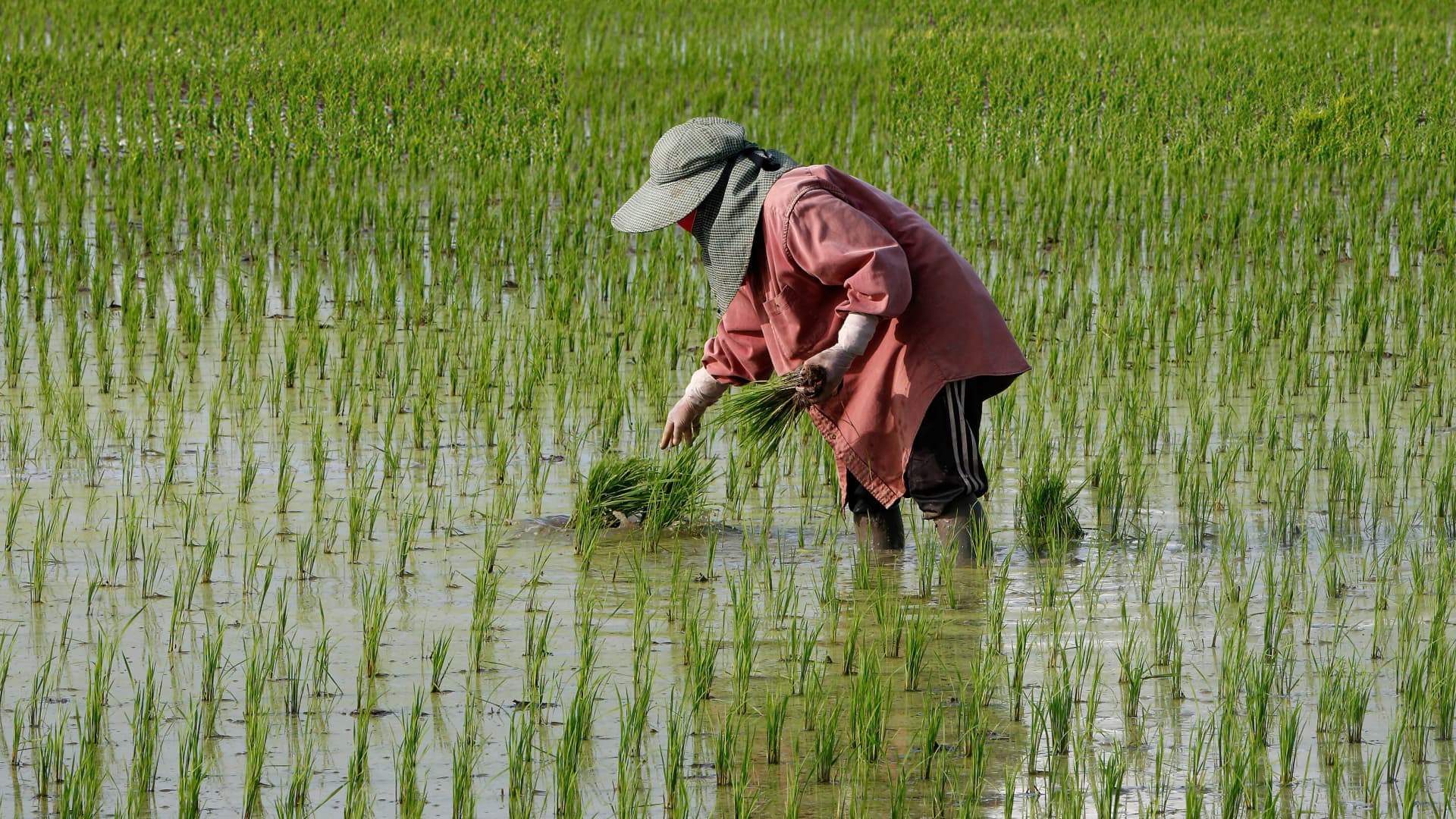Thailand wants its farmers to plant less rice to save water

A farmer planting rice sprouts on her rice field in Nakhon Sawan province, north of Bangkok.
Sopa Images | Lightrocket | Getty Images
Thailand, the world’s second largest exporter of rice, is encouraging its farmers to plant less of the crop in a bid to save water — a move that could roil rice markets further following India’s export ban.
Thailand is facing a spate of low rainfall. In an effort to conserve water for consumption, the Office of the National Water Resources (ONWR) has called on the country’s farmers to turn to “planting crops that use less water [which] can be harvested quickly.”
“The cumulative rainfall is about 40% less than normal, which is at high risk of water shortage,” secretary-general of the ONWR, Surasri Kidtimonton, said in a statement released by Thailand’s National Water Administration.
Kidtimonton said the country’s water management needs to “focus on water for consumption,” as well as “water for cultivation mainly for perennial crops.”
Perennial crops are crops that grow back after harvest and need not be replanted every year, unlike annual crops. Rice is categorized as an annual crop.
For every kilogram of rough rice grown, an average of 2,500 liters of water is needed. In comparison, alternative crops like millets require between 650 to 1,200 liters of water for the same amount harvested.
Just last month, India banned exports of non-basmati white rice, a move aimed at ensuring “adequate availability” in domestic markets, the government said.
India is the world’s leading rice exporter and accounts for 40% of global rice trade, and the ban is expected to affect millions.
“Global rice price will have the potential to increase further in the event that rice production in Thailand decreases significantly year on year,” Rabobank’s senior analyst Oscar Tjakra told CNBC.
However, it still remains to be seen whether Thai farmers will follow the directive, said Tjakra.
“Thai farmers might still choose to plant rice on the back of the current high global rice export prices environment,” he said.
Rice prices are already hovering at decade highs, in part due to tighter supplies when the staple became an attractive alternative as prices of other major grains surged following Russia’s invasion of Ukraine in February 2022.
“Thailand often pushes for water conservation, but it has little effect on the use of water as the water rights system has yet to be developed,” said Jeremy Zwinger, CEO of The Rice Trader told CNBC in an e-mail.




